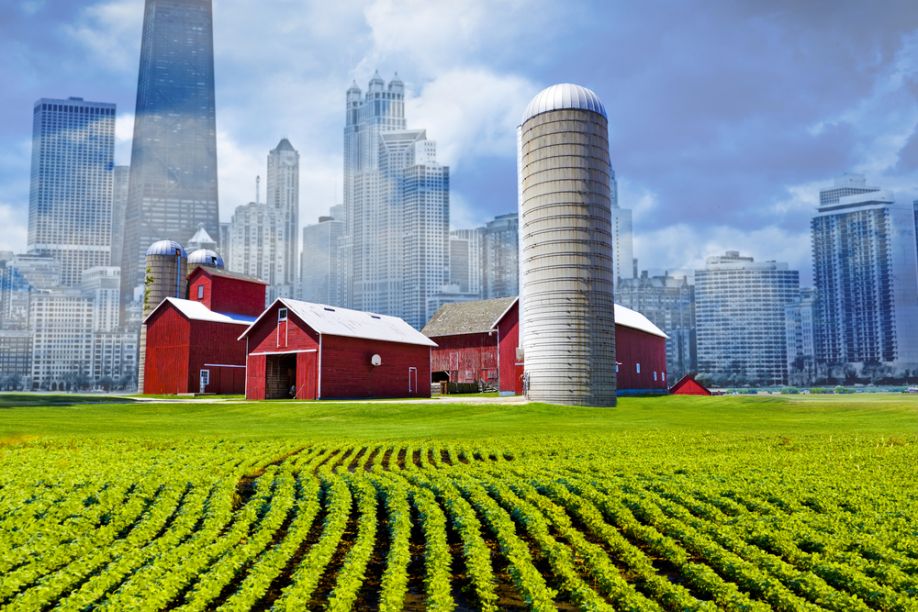How Resilient Is America's Food Supply Chain?

Big crises, like the coronavirus outbreak, tend to expose weaknesses in supply chains — especially as demand rapidly increases or decreases.
Now, a few weeks into the economic slowdown caused by COVID-19, we're beginning to see just how resilient America's food supply chain is — and also the ways it bends under pressure. At the same time, independent organizations and food supply chain workers are responding and finding new ways to make the supply chain more resilient.
Here is how the American supply chain is currently standing up to COVID-19 and how experts believe it will respond in the future. We'll also look at how farmers are using new techniques to make food logistics and distribution more efficient, sustainable and resilient.
How COVID-19 Is Impacting the Food Supply Chain
If you're concerned about supermarkets running out of food because of the coronavirus, you don't have to worry.
Reports of empty shelves at food banks and grocery stores bare of essentials — like pasta and toilet paper — have many worried we're witnessing serious issues with the supply chain. However, experts say it is unlikely grocery stores will run out of food any time soon.
A sudden surge in demand for certain goods — mostly the "panic buying" of fresh meat, canned goods, dried beans and rice — has definitely created some pressure on the supply chain. It's likely that, as social distancing and shelter-in-place orders continue, elevated demand for shelf-stable foodstuff will remain fairly consistent.
Sickness — and the stress of working through a pandemic — has had some impact on food production and logistics workers, especially truckers and farmworkers. Some farms that rely on seasonal foreign labor, like H-2A workers, are beginning to experience labor shortages as flights in and out of the country are canceled.
Right now, the country doesn't have a food shortage problem. It does, however, have a significant food waste issue. This phenomenon was true before the COVID-19 pandemic. On average, the U.S. wastes 30 to 40% of its food production each year — and the current crisis seems to have made the problem even worse.
You may have already seen a few headlines highlighting how food waste is continuing during the crisis. American dairy farmers have been forced to dump milk as demand has plummeted over the past few weeks. Canned goods and other food items normally destined for bulk retailers that serve restaurants now have nowhere to go. The way the supply chain currently runs, this food doesn't get redirected to the broader consumer market. Instead, it's mostly wasted.
Making the Food Supply Chain More Sustainable and Resilient
Some farmers and food logistics organizations are taking advantage of the current crisis to come up with new solutions that may make the food supply chain more sustainable and resilient.
Over the last few years, a significant number of farmers began experimenting with food waste-to-energy (WTE) projects. These projects take food that would otherwise be sent to landfills and use it to generate renewable energy.
These projects provide a valuable alternative to other energy sources used by food manufacturing — like non-renewable propane or natural gas, or energy from the grid, which isn't always guaranteed to be renewable. Other WTE processes can also use food waste to create biodiesel. This fuel can provide a renewable power alternative for farm equipment that needs diesel to run.
However, despite the increase in food waste, some WTE projects are struggling with the disruptions caused by COVID-19. These projects often depend on food waste from outside the farm — usually from sources like restaurants, offices and bars. That means many WTE projects don't have the materials they need to continue generating power. Nearly 100 WTE projects around the country right now are in development — and with most construction delayed due to the current crisis, they've come to a standstill.
Other organizations are finding ways to redirect the food supply chain's excess production so that it goes to people who are currently in need. For example, Second Harvest has been working with Disneyland to collect and donate surplus food to families in need. Because of park closures, these meals would have otherwise gone to waste. Food Rescue US is doing similar work with donations from restaurants and restaurant suppliers.
While these organizations aren't solving the food waste problem, they are showing alternatives to the current system. In the future, their examples may help the supply chain minimize food waste and steer overproduction to people in need.
How the Food Supply Chain Will Respond to the Next Few Months
The current unusual market conditions are likely to hold for the foreseeable future. Social distancing will continue to be the norm, and governments will maintain shelter-in-place orders. Many restaurants will remain closed, and demand for dry and shelf-stable foodstuffs will stay high. Food production may take a hit as labor shortages caused by sickness and restricted travel make it harder for farms and logistics companies to find essential workers.
The food supply chain isn't likely to collapse. However, it will continue to strain under the new pressure caused by sudden shifts in demand.
The current crisis may also be an opportunity to restructure our food supply chain for resilience and sustainability. WTE projects have become crucial as food waste has grown. Organizations redirecting excess production of the supply chain may provide an alternative model to current practices that waste significant amounts of food every year.
Comments (0)
This post does not have any comments. Be the first to leave a comment below.
Featured Product

